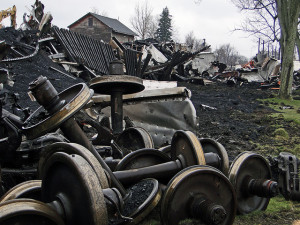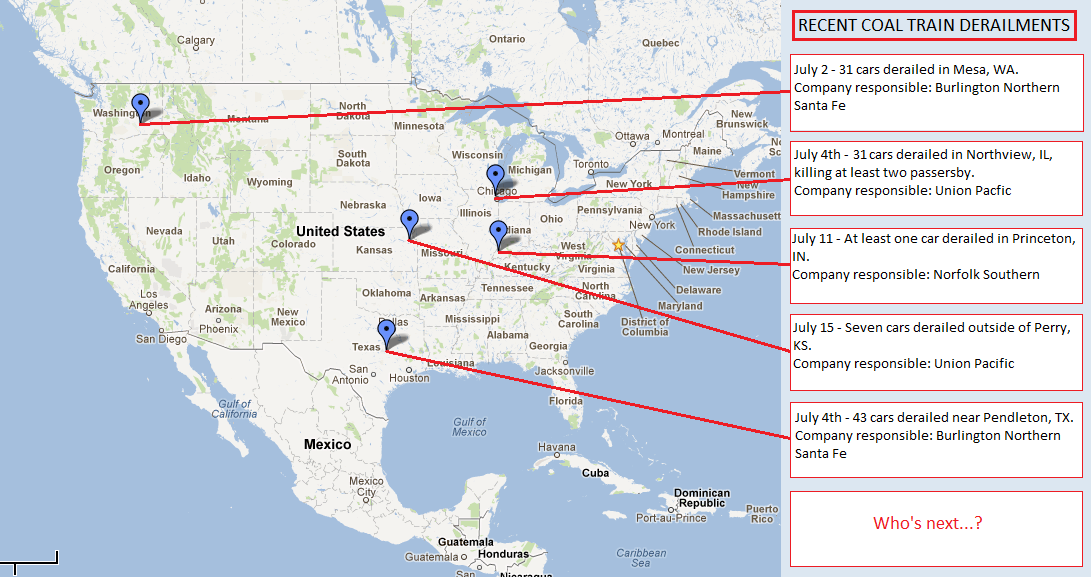We have much more to do and your continued support is needed now more than ever.
Two More Coal Train Wrecks — The Epidemic Continues
Five different trains carrying coal have derailed in the past two and a half weeks. The most recent wrecks happened Sunday in Jefferson County, Kansas, and last Tuesday in Gibson County in southwestern Indiana. The former resulted in seven derailed cars from a Union Pacific train, and workers are still trying to clear the line.
In last week’s accident a Norfolk Southern coal train jumped off the track and then back on again, but not before enough coal spilled to cause three railroad crossings to be shut down, at least one road closure, and damage to the rails that required it to be shut down for several days. Both trains were carrying heavy loads from Wyoming’s Powder River Basin coalfields.

But even though the magnitude of damage from each one differs, they all lead to problems for the communities in which they happen.We also know that more derailments will occur if plans proceed to export more coal to Asia through the Pacific Northwest.
Is Coal a Coal Train’s Worst Enemy?
Coal, as it turns out, is pretty bad for trains, not just people and wildlife: Not only is the dispersal of toxic coal dust one of the biggest dangers of a derailment, coal dust can help cause accidents as well.
According to a statement on the website of BNSF (a major rail company), “Coal dust poses a serious threat to the stability of the track structure and…to the operational integrity of our lines in the Powder River Basin.”
After a multiyear investigation, BNSF found that coal dust buildup can prevent water from draining out of the tracks, leading to flooding, warping and sometimes derailment.

According to railroad officials involved in the Illinois tragedy, “extreme heat created kinks in the rails and caused the derailment.”
The federal government just issued a safety advisory warning about the same thing, specifically referencing four coal train derailments this summer (and I learned a new term: “sun kinks” happen when a track expands and buckles in high heat). And because burning coal is a major contributor to climate change, some of the blame for warped rails goes here, too. Ironic, don’t you think? This reminds me of the expression, “if you find yourself in a hole, stop digging.”
The coal companies don’t want to admit it, but it comes down to basic math: Extracting and transporting more coal means more train derailments, more coal dust on the tracks and in our communities, more hazardous coal waste at mining sites, more polluted rivers from blasting and runoff, more altered landscapes and more unhealthy people.
We need to find a better way to keep our lights on.
Please stay tuned for an upcoming NWF report that will delve into the issues around plans to export Powder River Basin coal to Asia. This will include dangers stemming from the massive increase in the number of trains that will be needed to bring the coal from the mines to port.





















